| Resource Name | Description | Date Added | Resource Link |
|---|---|---|---|
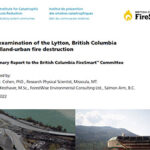 |
This document contains the summary report of the ICLR examination of the Lytton Wildland-Urban (WU) fire destruction. | 05/16/22 | View |
 |
The Giving Voice to Cultural Safety of Indigenous Wildland Firefighters in Canada Project is the first study of its kind! This project provides preliminary data on cultural safety and occupational... | 09/10/21 | View |
 |
Fire managers need better estimates of fuel loading so they can more accurately predict the potential fire behaviour and effects of alternative fuel and ecosystem restoration treatments. | 04/26/21 | View |
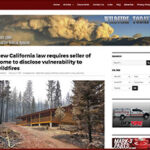 |
Beginning January 1 in California the seller of a home in a designated high fire area built before 2010 must disclose to the buyer conditions that make the home vulnerable... | 01/14/21 | View |
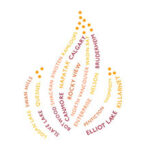 |
This report celebrates actions taken by local governments across Canada to anticipate and effectively address the peril of wildfires in recent years. | 01/11/21 | View |
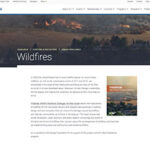 |
Firebreak: Wildfire Resilience Strategies for Real Estate details the implications of wildfires for the real estate industry and explores best practices in building design and land use policy that can... | 12/02/20 | View |
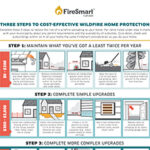 |
Complete these 3 steps to reduce the risk of a wildfire spreading to your home. For items listed under step 3 check with your municipality about any permit requirements and... | 10/05/20 | View |
 |
Canadians are urged to be mindful of both the advantages and risks of living in a country of such vast natural splendour. Notably, about 11 million people currently reside in... | 10/05/20 | View |
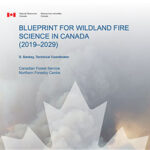 |
Like much of the world, Canada is experiencing more frequent, extreme, and complicated wildland fire events. Experts agree that this trend will continue. Although fires can play an important role... | 09/15/20 | View |
 |
This paper provides two case studies of FireSmart treatments in Canada's Northwest Territories and an observation of fire behaviour in thinned jack pine trees. | 09/15/20 | View |
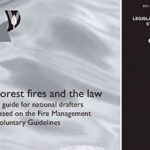 |
This legislative study serves as a guide for national drafters based on the Fire Management Voluntary Guidelines. | 09/11/20 | View |
 |
Understanding how embers travel is key in improving guidance for homeowners and communities. These videos provide insight in to the inner workings of wildfire embers and how they interact with... | 09/11/20 | View |
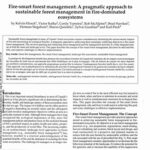 |
This paper describes the concept of fire-smart forest management, discusses its need and benefits, and explores challenges to effective implementation. | 09/11/20 | View |
 |
This interactive paper outlines how climate change is affecting fire regimes and vegetation in the Pacific Northwest. | 02/04/19 | View |

An examination of the Lytton, BC wildland-urban fire destruction
This document contains the summary report of the ICLR examination of the Lytton Wildland-Urban (WU) fire destruction.

Giving Voice to Cultural Safety of Indigenous Wildland Firefighters in Canada
The Giving Voice to Cultural Safety of Indigenous Wildland Firefighters in Canada Project is the first study of its kind! This project provides preliminary data...

The Photoload Sampling Technique
Fire managers need better estimates of fuel loading so they can more accurately predict the potential fire behaviour and effects of alternative fuel and ecosystem...

New California law requires seller of home to disclose vulnerability to wildfires
Beginning January 1 in California the seller of a home in a designated high fire area built before 2010 must disclose to the buyer conditions...

Cities Adapt to Extreme Wildfires
This report celebrates actions taken by local governments across Canada to anticipate and effectively address the peril of wildfires in recent years.

Wildfire Resilience Strategies for Real Estate
Firebreak: Wildfire Resilience Strategies for Real Estate details the implications of wildfires for the real estate industry and explores best practices in building design and...

Three steps to cost-effective wild home protection
Complete these 3 steps to reduce the risk of a wildfire spreading to your home. For items listed under step 3 check with your municipality...

FireSmart measures begin with maintenance
Canadians are urged to be mindful of both the advantages and risks of living in a country of such vast natural splendour. Notably, about 11...

Blueprint for wildland fire science in Canada
Like much of the world, Canada is experiencing more frequent, extreme, and complicated wildland fire events. Experts agree that this trend will continue. Although fires...

Fire behaviour in thinned jack pine
This paper provides two case studies of FireSmart treatments in Canada's Northwest Territories and an observation of fire behaviour in thinned jack pine trees.

Forest fires and the law
This legislative study serves as a guide for national drafters based on the Fire Management Voluntary Guidelines.

Ember Characteristics Research
Understanding how embers travel is key in improving guidance for homeowners and communities. These videos provide insight in to the inner workings of wildfire embers...

FireSmart forest management: A pragmatic approach to sustainable forest management in fire-dominated ecosystems
This paper describes the concept of fire-smart forest management, discusses its need and benefits, and explores challenges to effective implementation.

Changing wildfire, changing forests
This interactive paper outlines how climate change is affecting fire regimes and vegetation in the Pacific Northwest.